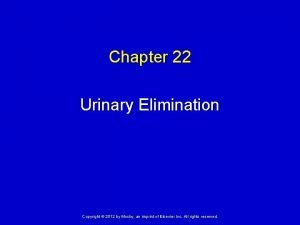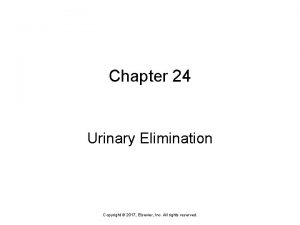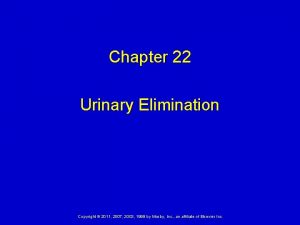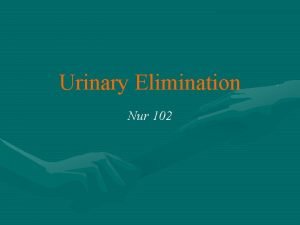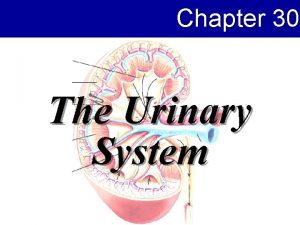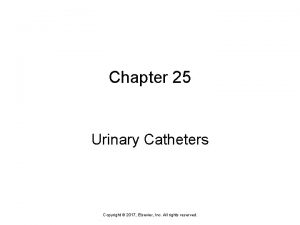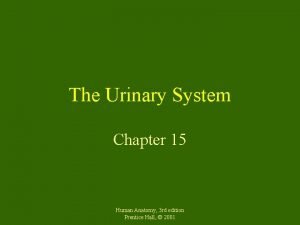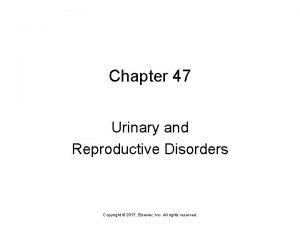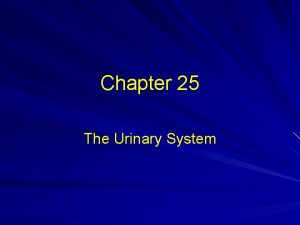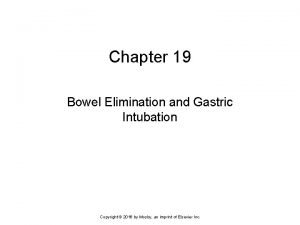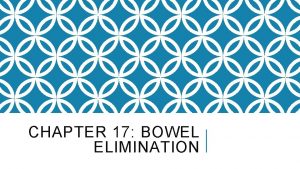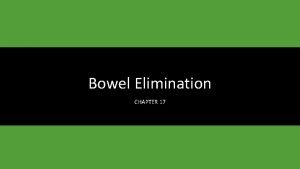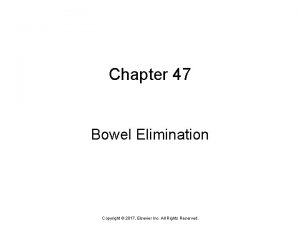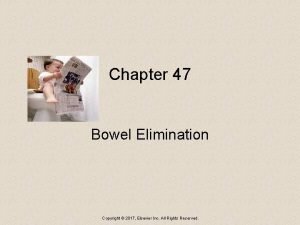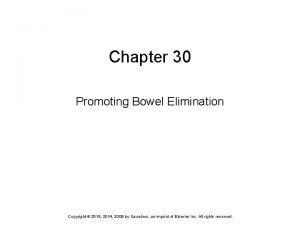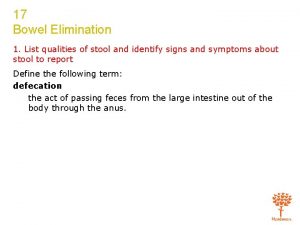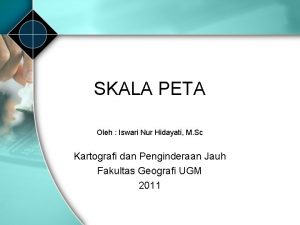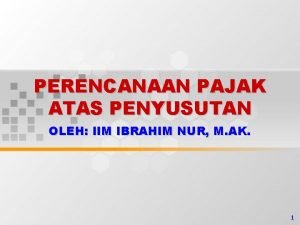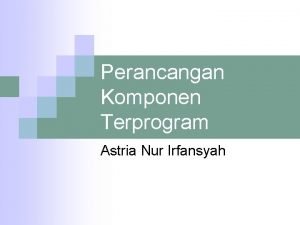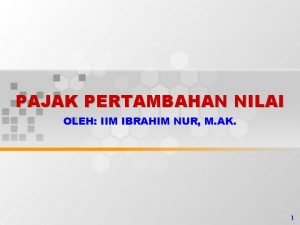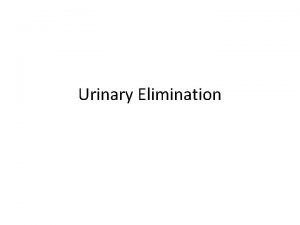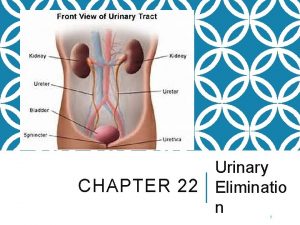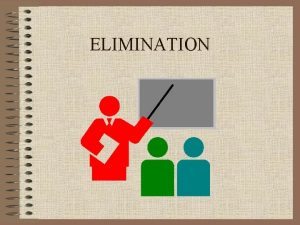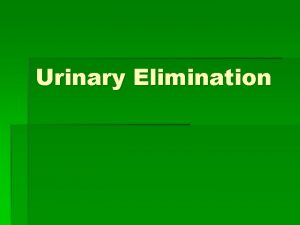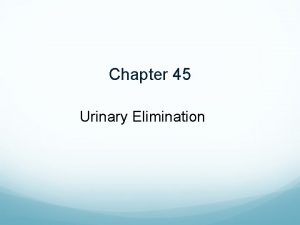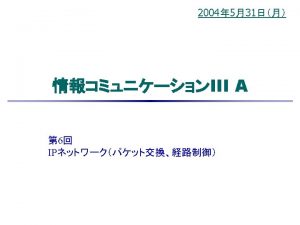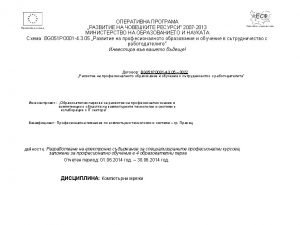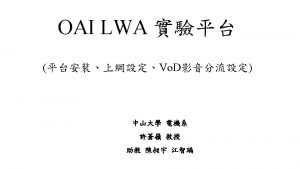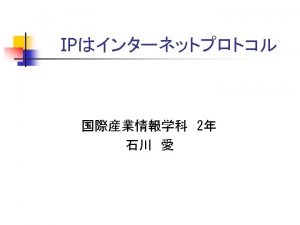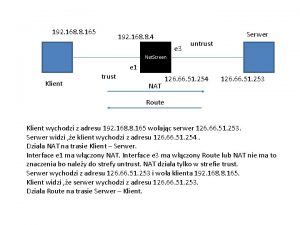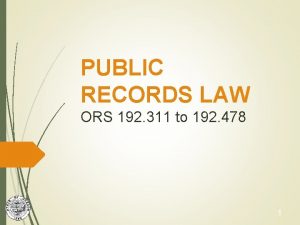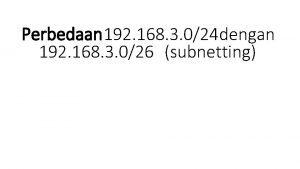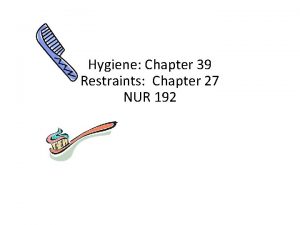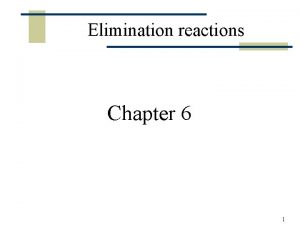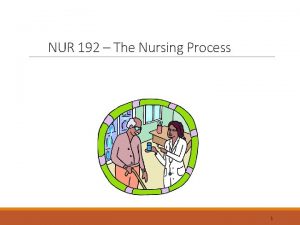1 Chapter 45 Urinary Elimination NUR 192 Scientific

































- Slides: 33

1 Chapter 45 Urinary Elimination NUR 192

Scientific Knowledge Base: Organs of Urinary Elimination Kidneys Ureters Remove waste from the Transport urine from the blood to form urine kidneys to the bladder -produce erythopoietin (RBC production) -Affect calcium & phosphate regulation Bladder Urethra Reservoir for urine until the urge to urinate develops Urine travels from the bladder and exits through the urethral meatus

3 Acts of Urination • Brain structure influences bladder function. ▫ Cerebral cortex, thalamus, hypothalamus, brain stem • Urination (Micturition): Normal voiding involves the contraction of the bladder and coordination/relaxation of the urethral sphincter. • Bladder capacity: 600 – 100 m. L of urine • Adults normally void every 2 -4 hours • Desire to Urinate: • Adult: 150 -200 m. L • Child: 50 -100 m. L • Reflux Incontinence

Factors Influencing Urination • Disease conditions • • Medications and medical procedures Socioeconomic factors (need for privacy) Psychological factors (anxiety, stress, privacy) Fluid balance ▫ Nocturia, polyuria, oliguria, anuria ▫ Diuresis ▫ Fever

5 Terms • Nocturia is the urge to void that awakens one at night. • Polyuria is an excessive output of urine. • Oliguria is a decreased urinary output in spite of adequate fluid intake. • Anuria is when the kidneys produce no urine. • Dysuria -burning during urination as urine passes through inflamed tissues. • Cystitis - an irritated bladder. Can lead to the bladder and urethral mucosa causing hematuria. • Pyelonephritis is an infection that has spread to the kidneys. S/S are flank pain, tenderness, fever, and chills.

Disease Conditions Affecting Urination • Prerenal, postrenal classification • Conditions of the lower urinary tract • Diabetes mellitus and neuromuscular diseases such as multiple sclerosis • Benign prostatic hyperplasia • Cognitive impairments (e. g. , Alzheimer’s) • Diseases that slow or hinder physical activity • Conditions that make it difficult to reach and use toilet facilities • End-stage renal disease, uremic syndrome

7 Diseases That Cause Irreversible Damage • ESRD ▫ Irreversible damage to the kidney tissue • Uremic syndrome ▫ Increase in nitrogenous wastes in the blood, fluid and electrolyte abnormalities, nausea, vomiting, headache, coma, and convulsions. ▫ If progresses, may require renal replacement therapies.

8 Dialysis • Dialysis can be peritoneal or renal. Peritoneal is an indirect method of cleaning the blood of waste products using osmosis and diffusion with the peritoneum functioning as a semipermeable membrane. • • Hemodialysis uses a machine equipped with a semipermeable filtering membrane that removes accumulated waste products and excess fluids from the blood. The processes of diffusion, osmosis, and ultrafiltration cleanse the client’s blood. The blood returns through a vascular access device (Gore-Tex graft, AV fistula, or hemodialysis catheter. • Organ transplantation is the replacement of the client’s diseased kidneys with a healthy one from a living or cadaver donor.

Indications for Dialysis Renal failure that can no longer be controlled by conservative management Worsening of uremic syndrome associated with end-stage renal disease (ESRD) Severe electrolyte and/or fluid abnormalities that cannot be controlled by simpler measures

Medical Interventions Affecting Urination • Surgical procedures ▫ Restriction of fluid intake lowers urine output. ▫ Stress causes fluid retention. • Medications ▫ Some cause urinary retention and/or overflow incontinence. ▫ Some cause urgency and incontinence. ▫ Some change the color of urine. • Diagnostic examinations ▫ Restriction of fluid intake lowers urine output. ▫ Direct visualization causes localized trauma and edema; patients may have difficulty voiding.

Alterations in Urinary Elimination Urinary retention Urinary tract infections (UTIs) An accumulation of urine due to the inability of the bladder to Can Result from catheterization or procedure empty Other: residual urine, poor perineal hygiene Urinary incontinence Urinary diversions Involuntary leakage of urine Diversion of urine to external source

12 continent pouch Nephrostomy

Older Adults • Provide frequent opportunities to void. Older adults have a smaller bladder capacity than younger adults. • Encourage older adults to empty the bladder completely before and after meals and at bedtime. • Encourage patients to increase fluid intake to at least six to eight glasses a day unless medically contraindicated.

Nursing Knowledge Base • • • Infection control and hygiene Growth and development Muscle tone Psychosocial considerations Cultural considerations

Nursing Process and Alterations in Urinary Function • Assessment ▫ Nursing history Patterns of urination Frequency, times of day, normal volume, recent changes Symptoms of urinary alterations Urgency, void when sneezing or coughing Factors affecting urination Age, environment, medications, psychological factors, muscle tone, fluid balance, current surgical/diagnostic procedures, presence of disease conditions.

Physical Assessment Skin and Mucosal Membranes Kidneys Assess hydration Flank pain may occur with infection or inflammation Bladder Urethral Meatus Distended bladder rises above symphysis pubis Observe for discharge, inflammation, and lesions

17 Assessment of Urine • Daily Weights & Intake and output • Color ▫ Pale-straw to amber color • Clarity ▫ Transparent unless pathology is present • Odor ▫ Ammonia in nature

18 Weights and Intake & Output • Daily Weights & Intake and output ▫ Weights ▫ I&O: Indications: Intake Includes: Oral: ANY & all liquids by mouth: gelatin, ice cream, soup, juice, water; Other: Any type of feeding received thru a tube; IV fluids (continuous, intermitant-piggybacks-, flushes), blood & blood components, liquid medications, water to flush NG tubes (before/after meds) Output Includes: urine, diarrhea, vomitus, gastric suction, drainage from postsurgical wounds or other tubes

19 Weights and Intake & Output • Output Collection & Measurement: ▫ Ambulatory Client: Save urine in a calibrated Container Puritan hat, graduated cylinder: Fig 41 -8 pg 983 Measure & record amount after each void ▫ Bed-bound Bed pan, urinal Measure & record amount after each void ▫ Foley Catheter/Tube/suction Foley: empty urine into a graduated container or Urimeter: attached to foley & drainage bag (holds 100 -200 ml) and then empty into drainage bag. Used for precise measurement Drainage/Suction: empty container Documentation I&O calculated by shift & over 24 hours REPORT: end of shift I&Os; ANY hourly output < 30 m. L over 2 hours; high volumes: 2000 -2500 ml daily.

20 Diagnostic test & Examinations • Collection: ▫ Test determines method ▫ Each specimen: Must be labeled including: client’s name, date & time of collection. Transported to lab timely Collection: TABLE 45 -2. Random, Mid-stream (clean): Skill 45 -1 Sterile – if client has Foley ▫ Obtain thru sampling port. Clamp tubing below port & allow collection in tube, use antimicrobial swab and withdraw 3 -5 m. L with syringe. Place urine in sterile container Timed – 2, -12, or 24 hour collections ▫ Time begins after client urinates & ends with a final voiding at the end of the time period

Urine Collection in Children Specimen collection from infants and children is often difficult. Adolescents and school-aged children usually are able to cooperate. Preschool children and toddlers have difficulty voiding on request.

22 Diagnostic test & Examinations • Testing: ▫ Urinalysis: First voided p. H: (4. 6 -8. 0) Protein (none or up to 8 mg/100 m. L) Glucose: none Ketones: none Blood: none ▫ Specific gravity: 1. 0053 -1. 03 ▫ Culture ▫ Diagnostic: Noninvasive examination, Invasive examination Signed consent for procedure, assess for allergies (shellfish (iodine), pre -test instructions (NPO, clear liquids, bowel cleansing)

23 Implementation • • Catheterization Catheter insertion Catheter care Alternative to urethral catheterization

24 Procedure for Catheterization • • Supplies: Catheterization Kit Bath Blanket Additional light - penlight Sterile gloves Tape Sharpie

25 Implementation of skill • 1. provide privacy • 2. Raise bed to a comfortable height • 3. Drape patient with blanket 4. Remove wrapper of packet and use as a trash bag. 5. Apply clean gloves locate land mark –change gloves and wash hands. 6. Open sterile kit 7. Place drape under buttock – Shinny side down 8. Apply sterile gloves

26 Cont. • 9. Open Betadine – be sure not allergic – pour over cotton balls. • 10. Squirt lubricate on tray • 11. Test balloon on catheter, and aspriate fluid back. • 12. Spread lubricate on catheter and place back in box • 13. Separate trays and move top one forward.

27 Cont. • Pick up cotton balls with forceps and clean client. Top to bottom starting on side away from you first, other side, then down middle. Different cotton ball each time. • Pick up catheter and insert 2 -3 inches for female and 6 -8 inches for male or until you see urine. • Hold catheter in place and blow up balloon to secure, then tape in place.

28 Cont • • Removal of foley: 1. obtain order 2. Gather supplies 3. Empty collection bag and remove 4. Place towel under hip 5. Withdraw solution with 10 cc syringe 6. Squirt solution into trash and do a second time making sure balloon collapsed. • Clean patient and remove dirty items to dirty utility room.

29

30

31 Evaluation • Determine if client has met outcomes and goals. • Evaluate how the client reports improvement that are made. • Help the client redefine goals if needed. • Revise nursing interventions as indicated.

32 Lets look at J. T’s 24 hour intake • J. T. ’s primary IV is running at 34 ml/hr while NPO. The nurse runs Vancomycin 250 mg IV q 8 hr [volume is 100 ml per dose]. Then the nurse administers ampicillin (395 mg IV q 6 hr) it is given in 10 ml syringes. Since microtubing was used for the medications, total flush is negligible (approximately 3 ml). What is John’s total intake for 24 hours? • Calculate using the critical information:

This work is licensed under a Creative Commons Attribution 4. 0 International License. Except where otherwise noted, this content by Southern Regional Technical College is licensed under the Creative Commons Attribution 4. 0 International License. To view a copy of this license, click https: //creativecommons. org/licenses/by/4. 0/ Healthcare Careers Work!(HCW) is sponsored by a $2. 3 million grant from the U. S. Department of Labor, Employment & Training Administration. TAACCCT Grant #TC- 26488 -14 -60 -A-13. Southern Regional Technical College is an equal opportunity employer and will make adaptive equipment available to persons with disabilities upon request. This workforce product was funded by a grant awarded by the U. S. Department of Labor’s Employment and Training Administration. The product was created by the grantee and does not necessarily reflect the official position of the U. S. Department of Labor. The U. S. Department of Labor makes no guarantees, warranties, or assurances of any kind, express or implied, with respect to such information, including any information on linked sites and including, but not limited to, accuracy of the information or its completeness, timeliness, usefulness, adequacy, continued availability, or ownership.
 Chapter 22 urinary elimination
Chapter 22 urinary elimination Chapter 24 urinary elimination
Chapter 24 urinary elimination Chapter 22 urinary elimination
Chapter 22 urinary elimination Nur 102
Nur 102 Alteration in urinary elimination
Alteration in urinary elimination Gaussian elimination and gauss-jordan elimination
Gaussian elimination and gauss-jordan elimination Kidneys location and structure figure 15-1
Kidneys location and structure figure 15-1 Hyperproteinuria word parts
Hyperproteinuria word parts The urinary system chapter 30
The urinary system chapter 30 Chapter 15 the urinary system figure 15-3
Chapter 15 the urinary system figure 15-3 Chapter 25 urinary catheters
Chapter 25 urinary catheters Chapter 20 urinary/excretory system
Chapter 20 urinary/excretory system The urinary system chapter 15
The urinary system chapter 15 Chapter 9 the urinary system labeling exercises
Chapter 9 the urinary system labeling exercises Chapter 47 urinary and reproductive disorders
Chapter 47 urinary and reproductive disorders Chapter 25 the urinary system
Chapter 25 the urinary system Information gathered during an experiment
Information gathered during an experiment How is a scientific law different from a scientific theory?
How is a scientific law different from a scientific theory? Parallax enema
Parallax enema Types of enema
Types of enema Chapter 17 bowel elimination
Chapter 17 bowel elimination Bowel elimination chapter 17
Bowel elimination chapter 17 Chapter 47 bowel elimination
Chapter 47 bowel elimination Chapter 47 bowel elimination
Chapter 47 bowel elimination Chapter 30 promoting bowel elimination
Chapter 30 promoting bowel elimination Ostonies
Ostonies What can ruin a stool specimen if it is included
What can ruin a stool specimen if it is included Spojka trotzdem
Spojka trotzdem Iswari nur hidayati
Iswari nur hidayati Struktur mikrokontroler
Struktur mikrokontroler Iim ibrahim nur
Iim ibrahim nur Astria nur irfansyah
Astria nur irfansyah Iim ibrahim nur
Iim ibrahim nur Ein seufzer lief schlittschuh
Ein seufzer lief schlittschuh
